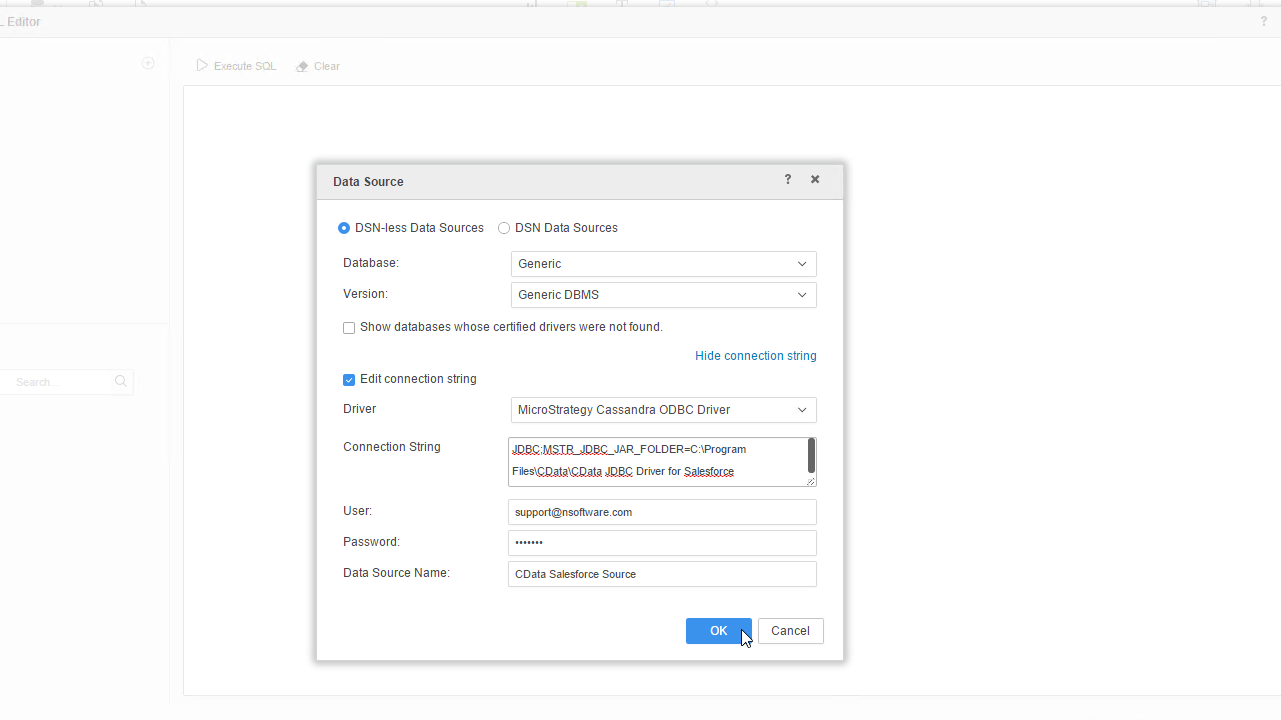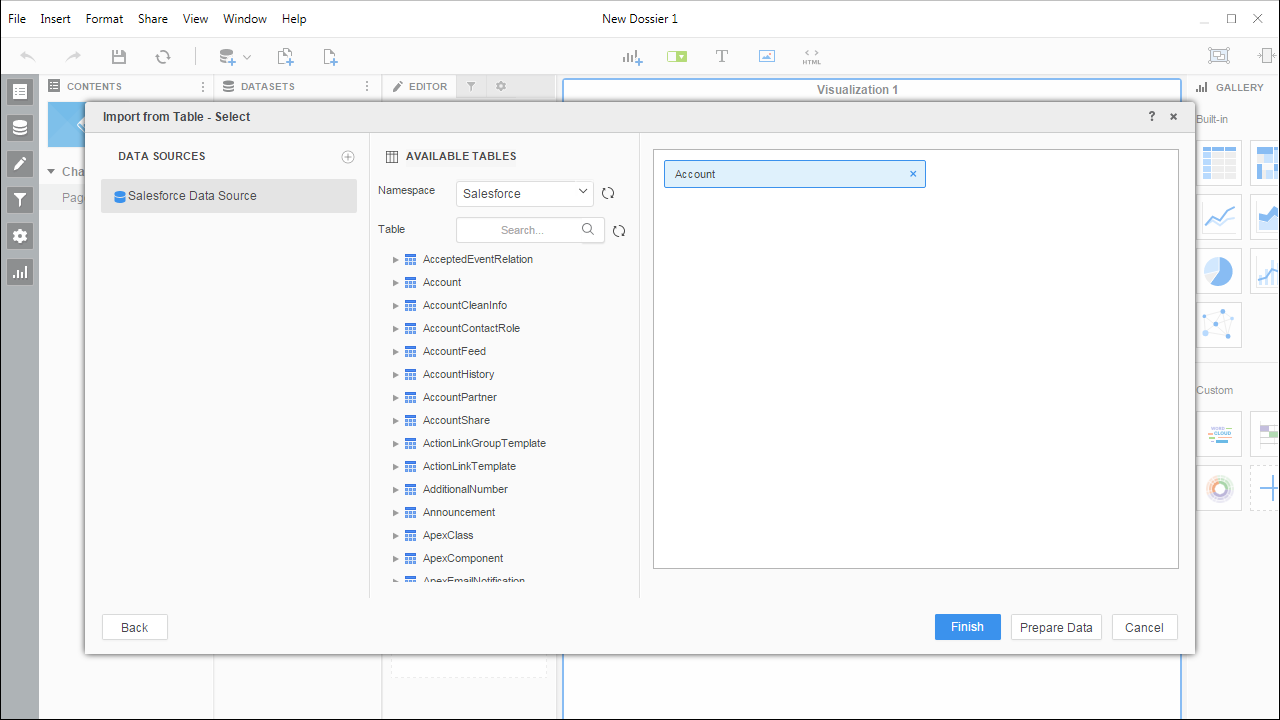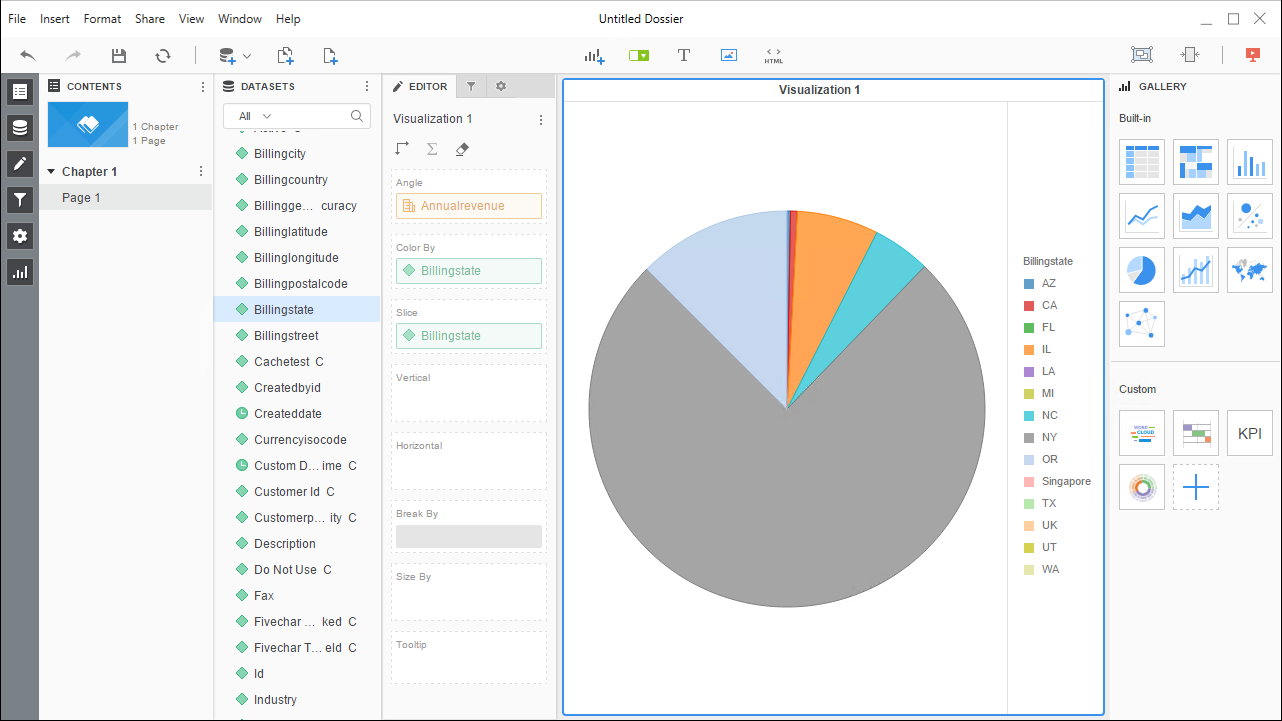Discover how a bimodal integration strategy can address the major data management challenges facing your organization today.
Get the Report →Use the CData JDBC Driver for Act CRM in MicroStrategy Desktop
Connect to Act CRM data in MicroStrategy Desktop using the CData JDBC Driver for Act CRM.
MicroStrategy is an analytics and mobility platform that enables data-driven innovation. When you pair MicroStrategy with the CData JDBC Driver for Act CRM, you gain database-like access to live Act CRM data from MicroStrategy, expanding your reporting and analytics capabilities. In this article, we walk through adding Act CRM as a data source in MicroStrategy Desktop and creating a simple visualization of Act CRM data.
The CData JDBC Driver offers unmatched performance for interacting with live Act CRM data in MicroStrategy due to optimized data processing built into the driver. When you issue complex SQL queries from MicroStrategy to Act CRM, the driver pushes supported SQL operations, like filters and aggregations, directly to Act CRM and utilizes the embedded SQL engine to process unsupported operations (often SQL functions and JOIN operations) client-side. With built-in dynamic metadata querying, you can use native MicroStrategy data types to visualize and analyze Act CRM data.
Connect to and Visualize Act CRM Data using MicroStrategy Desktop
In addition to connecting to Act CRM in MicroStrategy enterprise products, you can connect to Act CRM in MicroStrategy Desktop. Follow the steps below to add Act CRM data as a dataset using JDBC and create visualizations and reports of Act CRM data.
- Open MicroStrategy Desktop and create a new dossier.
- In the datasets panel, click New Data, select Databases, and choose Select a Table as the Import Option.
- Add a new data source and choose the DSN-less data sources option.
- Choose Generic in the Database menu and Generic DBMS in the Version menu.
- Click the link to show the connection string and opt to edit the connection string. In the Driver menu, select MicroStrategy Cassandra ODBC Driver. (MicroStrategy requires a certified driver to interface through JDBC; the actual driver will not be used.)
- Set the connection string as follows and click OK:
- Add the JDBC keyword to the connection string.
- Set MSTR_JDBC_JAR_FOLDER to the path of the JAR file for the JDBC driver. (C:\Program Files\CData JDBC Driver for Act CRM\lib\ on Windows.)
- Set DRIVER to cdata.jdbc.actcrm.ActCRMDriver, the driver class.
- Set URL to the JDBC URL for the Act CRM driver, setting the necessary connection properties.
The User and Password properties, under the Authentication section, must be set to valid Act! user credentials. In addition to the authentication values, see the following:
-
Connecting to Act! Premium
In addition to the authentication values, the URL to Act! is also required; for example https://eup1-iis-04.eu.hosted.act.com/.
Additionally, you must specify the ActDatabase you will connect to. This is found by going to the About Act! Premium menu of your account, at the top right of the page, in the ? menu. Use the Database Name in the window that appears.
-
Connecting to Act! Premium Cloud
To connect to your Act! Premium Cloud account, you also need to specify the ActCloudName property. This property is found in the URL address of the Cloud account; for example https://eup1-iis-04.eu.hosted.act.com/ActCloudName/.
Note that retrieving ActCRM metadata can be expensive. It is advised that you set the CacheMetadata property to store the metadata locally.
Built-in Connection String Designer
For assistance in constructing the JDBC URL, use the connection string designer built into the Act CRM JDBC Driver. Either double-click the JAR file or execute the jar file from the command-line.
java -jar cdata.jdbc.actcrm.jarFill in the connection properties and copy the connection string to the clipboard.
![Using the built-in connection string designer to generate a JDBC URL (Salesforce is shown.)]()
When you configure the JDBC URL, you may also want to set the Max Rows connection property. This will limit the number of rows returned, which is especially helpful for improving performance when designing reports and visualizations.
-
A typical connection string follows:
JDBC;MSTR_JDBC_JAR_FOLDER=PATH\TO\JAR\;DRIVER=cdata.jdbc.actcrm.ActCRMDriver;URL={jdbc:actcrm:URL=https://myActCRMserver.com;User=myUser;Password=myPassword;ActDatabase=MyDB;};![Creating a new data source for Act CRM.]()
- Right-click on the new data source, and choose Edit catalog options.
- Edit the SQL Statement to SELECT * FROM SYS_SCHEMAS to read the metadata from the JDBC Driver.
- Select the new data source to view the available tables. You may need to manually click the search icon in the Available Tables section to see the tables.
- Drag tables into the pane to import them.
![Select tables to import.]() Note: Since we create a live connection, we can import whole tables and utilize the filtering and aggregation features native to the MicroStrategy products.
Note: Since we create a live connection, we can import whole tables and utilize the filtering and aggregation features native to the MicroStrategy products. - Click Finish and choose the option to connect Live. Live connections are possible and effective, thanks to the high-performance data processing native to CData JDBC Drivers.
- Choose a visualization, choose fields to display, and apply any filters to create a new visualization of Act CRM data. Data types are discovered automatically through dynamic metadata discovery. Where possible, the complex queries generated by the filters and aggregations will be pushed down to Act CRM, while any unsupported operations (which can include SQL functions and JOIN operations) will be managed client-side by the CData SQL engine embedded in the driver.
![Visualize Act CRM data.]()
- Once you are finished configuring the dossier, click File -> Save.
Using the CData JDBC Driver for Act CRM in MicroStrategy Desktop, you can easily create robust visualizations and reports on Act CRM data. Read our other articles for connecting to Act CRM data in MicroStrategy Developer and connecting to Act CRM data in MicroStrategy Web for more examples.








 Note: Since we create a live connection, we can import whole tables and utilize the filtering and aggregation features native to the MicroStrategy products.
Note: Since we create a live connection, we can import whole tables and utilize the filtering and aggregation features native to the MicroStrategy products.
